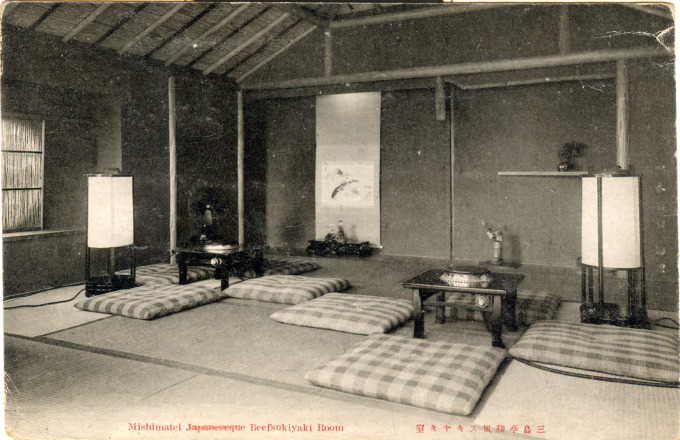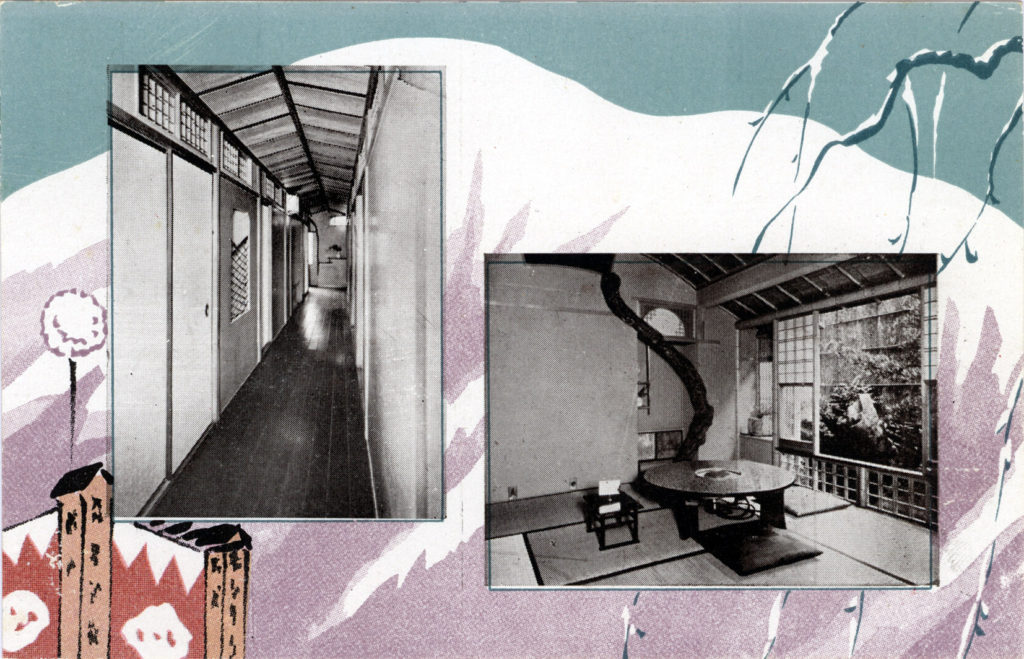“Mishimatei first opened as a butcher’s and meat restaurant in 1873, when meat was still an exotic delicacy. The restaurant location in the Teramachi district of Kyoto was established in 1904, and it soon became famous for its sukiyaki (broiled beef), mizutaki (with chicken), and oiru yaki (fried beefsteak). Climbing the staricase of this traditional wood-frame restaurant with its turn-of-the-20th-century atmosphere is like journeying into the past.
“Five generations of chefs have preserved the delicious sukiyaki recipe served here. At the street level butcher’s counter, housewives line up to pay top dollar for the high-quality beef, but your feast awaits upstairs in the large tatami-matted dining room, one of the many cheerful garden rooms, or the endearing teahouse (our favorite). A kimono-clad attendant will help you get started cooking everything at your table.”
– Fodor’s Japan, edited by Stephanie E. Butler & Alexis C. Kelly, 2009
“Sukiyaki is a Japanese dish, of the soup or stew type, prepared and served in the nabemono (Japanese hot pot) style. It consists of meat (usually thinly sliced beef) which is slowly cooked or simmered at the table, alongside vegetables and other ingredients, in a shallow iron pot in a mixture of soy sauce, sugar, and mirin [sweetened rice wine]. Before being eaten, the ingredients are usually dipped in a small bowl of raw, beaten eggs.
“… In the 1860s when Japan was opened to foreigners, new cooking styles were also introduced. Cows, milk, meat, and eggs became widely used, and sukiyaki was the most popular way to serve them. The first sukiyaki restaurant, Isekuma, opened in Yokohama in 1862.”
– Wikipedia
“Now, it is strange that, though many stories are told of the origin of sukiyaki, what appears to be the most authentic is that Japanese farmers years ago found meat fried on the plow-share the most delicious. Especially did they find this so when they believed it a sin to eat meat in Buddhist Japan. To the succulent meat was added therefore the ‘sauce’ of eating what was forbidden … [A]dded to its taste was the even greater pleasure of eating this forbidden meat in mortal sin.
“The word [sukiyaki] literally means ‘to fry on a plow.’ It is said that the Japanese ‘Bo-bos’ [rice farmers] of early times fried their prohibited meat on their plows. In support of this theory we have it from the old book Koji Kusen, published over a century ago, that ‘Sukiyaki is to grill chicken, seasoned in soy, on a plow-share over a fire.’
“It was towards the end of the Tokugawa Era that Japanese progressives claimed the right to eat meat in Japan. In fact, it became a patriotic duty, in order to build up the nation’s youth.”
– We Japanese Vol. 2, Sakai Atsuharu, Fujiya Hotel, 1937



